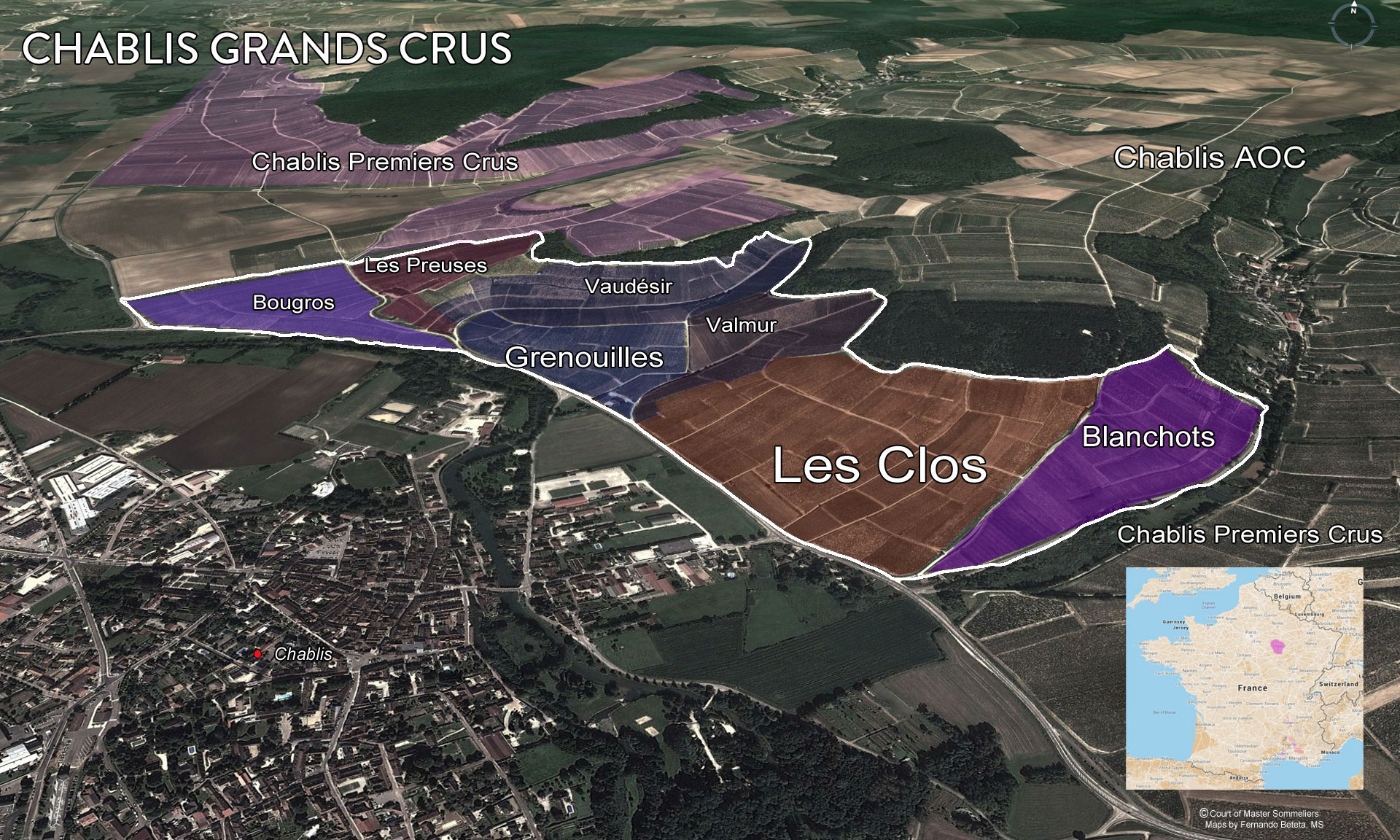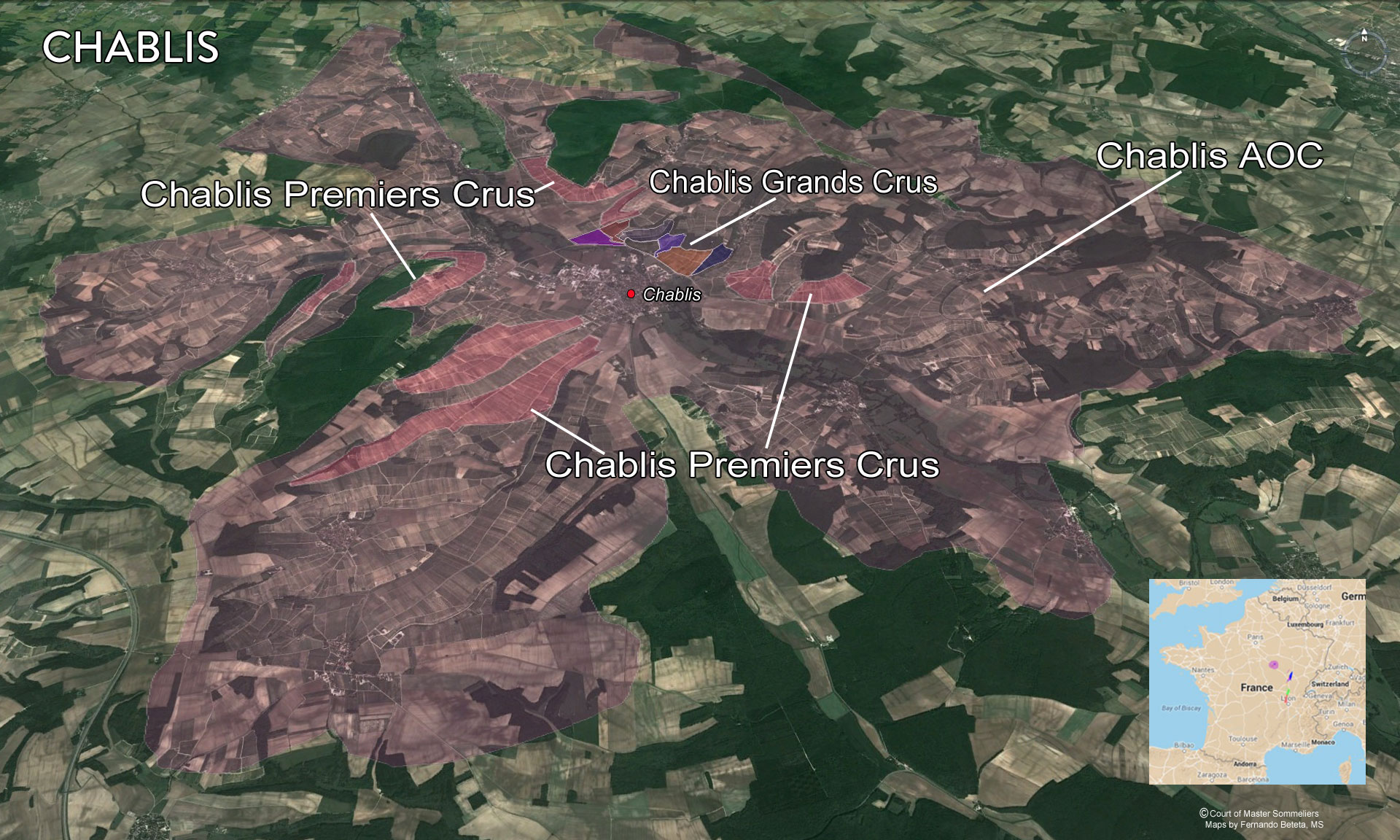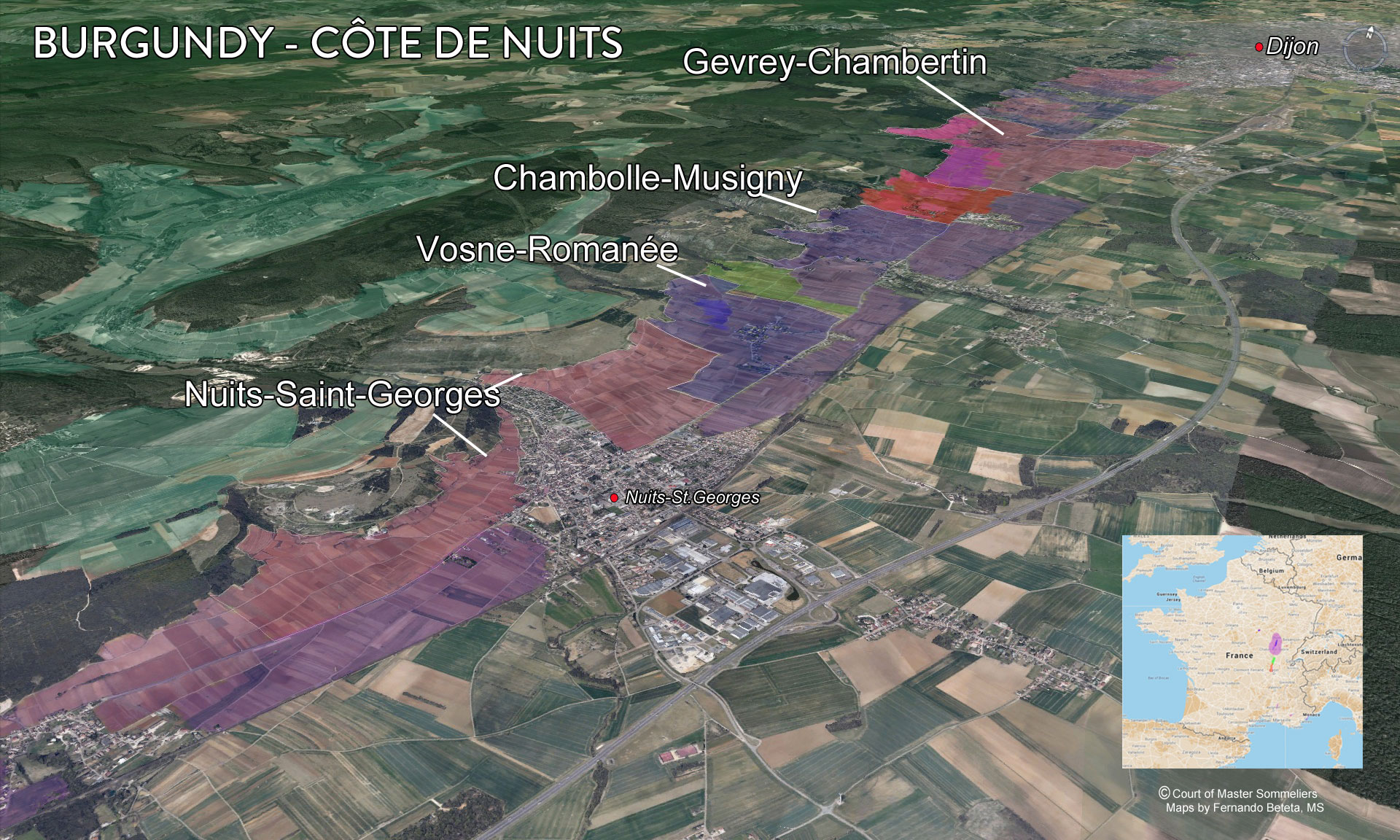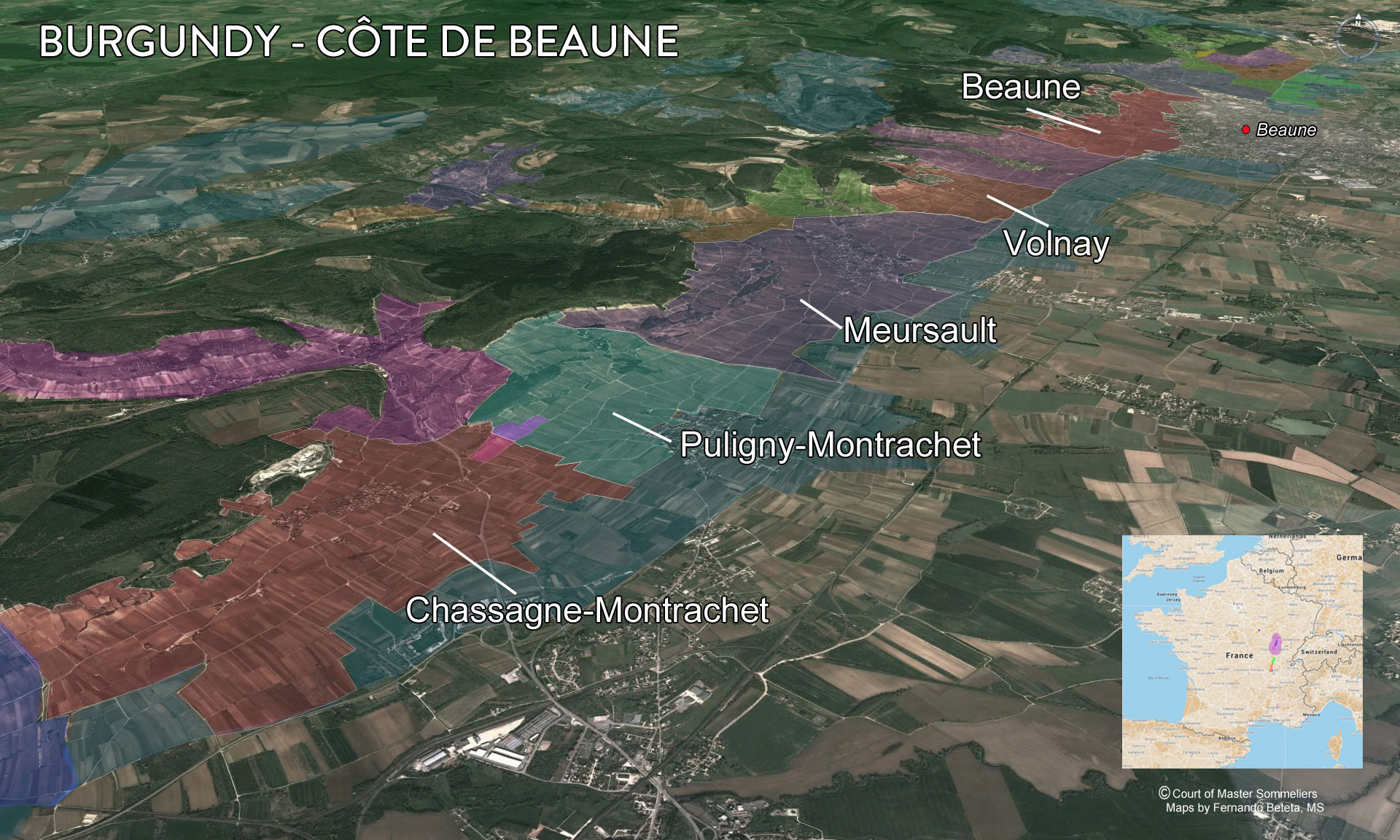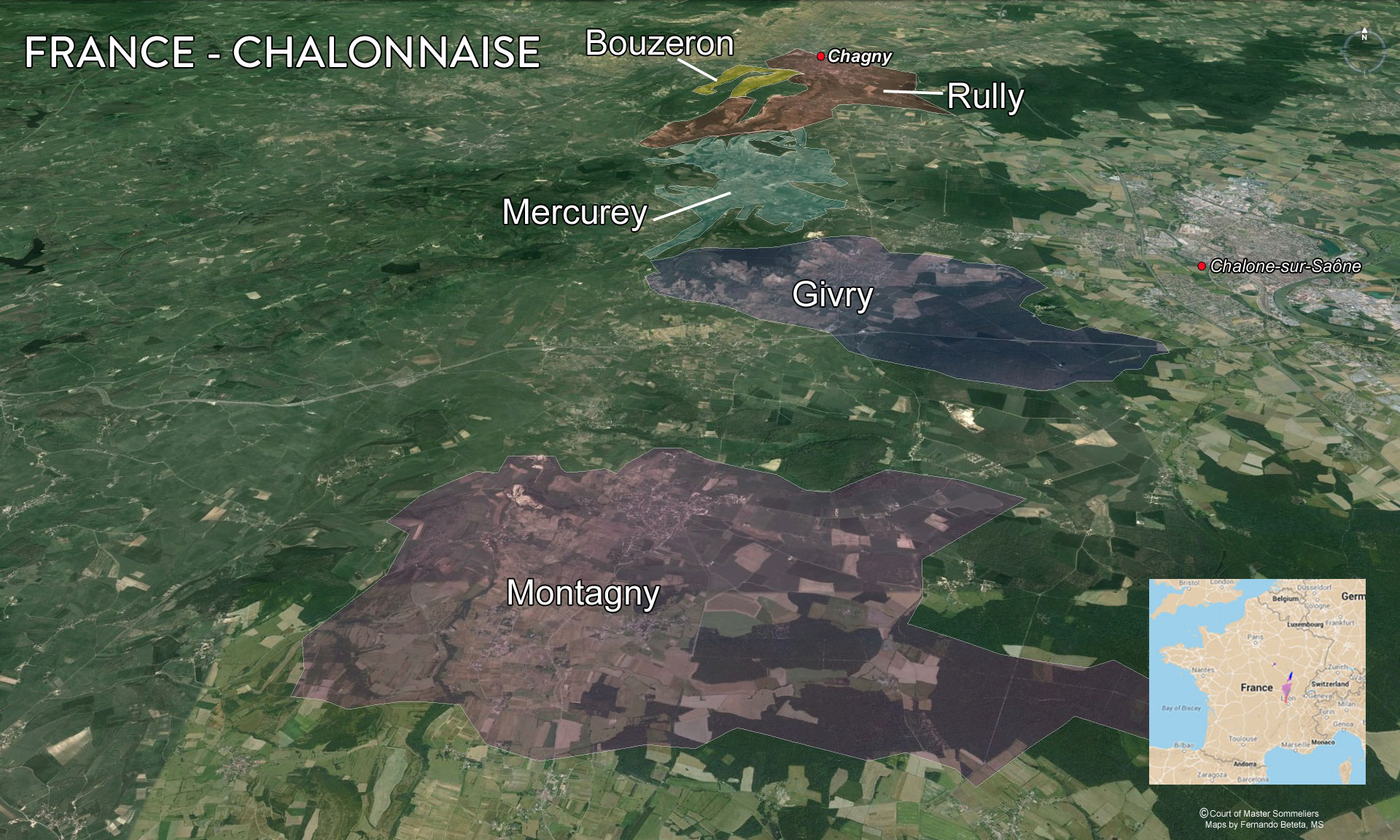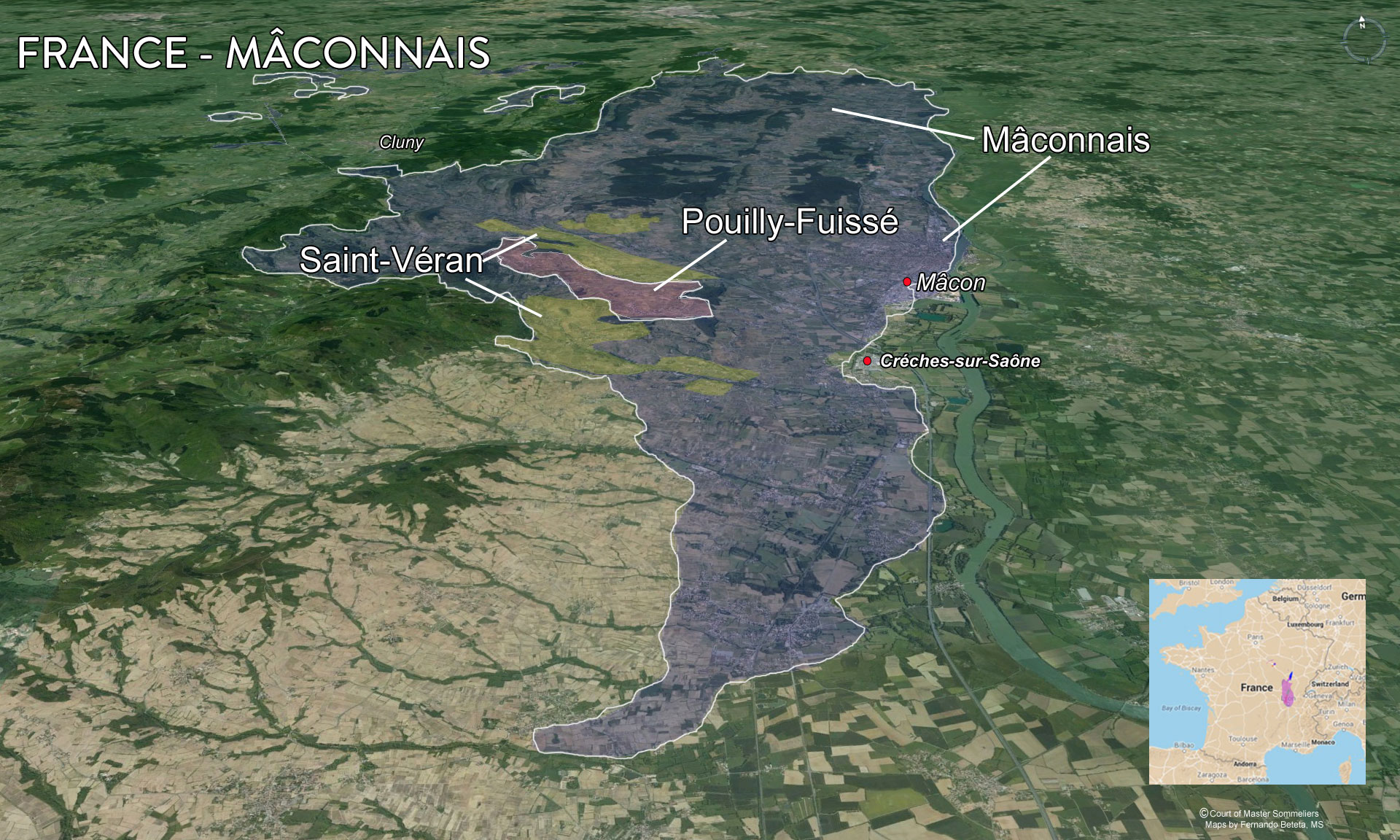Learn about French Wine
by Fernando Beteta, MS
FRENCH WINE LAW
France is one of the most important wine regions in the world due to the diversity in styles and regions. Over history, borders, allowed grapes, viticultural practices and vinification methods have been established by common practice. As recent as the 1930’s, national and international laws were created to protect these practices. Today an AOC (Appellation d’Origine Contrôlée) will ensure authenticity of place and typicity of style.
Quality levels: Vin de France vs AOP
Wines without geographical indications are labeled “Vin de France” this is roughly 20% of all wine produced in France.
Regulations are the least restrictive, they allow higher yields, no specific place of origin, variety of grapes and vintages allowed, plus added flavor practices. These wines are often regarded as “inferior” quality, but today many winemakers are declassifying their wines to this category to allow them flexibility with experimentation and expression of winemaking. ie: Natural wines and international grapes.
Wines with a geographical indication will guarantee that all the grapes come from within the boundaries of the region and viticultural and winemaking practices are followed. ie Champagne is only from the region of Champagne and always sparkling.
Burgundy
HISTORY OF BURGUNDY
Monsastic orders placed a huge role in winemaking during the middle ages. While the Ancient Romans were the first to bring wine to the region, it was the Christian Cistercian monks that began to farmed and cultivated vineyards from the larger amount of lands they owned. Burgundy became a powerful region politically and gave rise to the fame of the food & wine.
Vineyards today still carry many of the original names given in the 12th and 14th centuries.
After the inheritance laws established through the Napoléon code in 1804, the fragmentation of the vineyard ownership increased immensely. Vineyards today can have many separate owners and villages can have hundreds, if not thousands of tiny parcels within tiny vineyards. The original names are kept so this can create confusion with labels and diverse quality.
Tenzing Producers
Location
Burgundy is a fairly small region, located in the center of Western continental Europe. The climate and weather are due to the northerly latitude where winters are cooler, but summers can be hot and humid. Growing grapes in ancient times is the same as today, much easier where it is warmer and sunny.
However, this northerly location is ideal for grapes like Chardonnay and Pinot Noir, that require longer maturation on the vine to develop flavors. The soils of Burgundy are equally as important due to the millions of years ago when it was under the ocean. Fossils are common in the soils of Chablis, whereas Limestone, granites and clays are found further south after rivers carved out valleys, leaving ideal slopes on hillsides facing east and southeast.
The general location of the heart of Burgundy (Côte d’Or) is found between the cities of Dijon and Beaune, while the entirety is in between Chablis in the north down to Lyon in the south, below Beaujolais.
Classification of Burgundy
A.O.C. wines are labeled by their geographic locations but also given a qualitative designation based on the quality of the location.
The largest appellation is the regional Bourgogne, which is approximate 56% of total production.
Village wines (Vosne-Romanée, Gevrey-Chambertin, Mercurey, Rully, etc.) make up about 30% of total production. These wines are considered good quality and representative of their villages.
Premier Crus are basically single vineyards, with a few exceptions, and carry the name of said vineyards on the labels. There are currently over 550 Premier Crus, but just 10-12% of the total production. Recognizing which Premier Crus are at the top of the quality chain, will reward collectors greatly.
Grand Crus make up a mere 2% of the appellations, there are only 33. Prices have increased exponentially in the past few years, making them almost unattainable for most consumers. These wines are single vineyards and will be labeled with the name instead of the village.
Domaine versus Negociant
Terminology can be confusing and navigating the wide list of producers from the same vineyard can be daunting. Understanding the difference between a Domaine, which is referred to the growers, owners of the winery, vineyards and business, and a Négociant, who is in most cases is just a merchant that can buy grapes, finished wines or make their own wines is key to knowing what is in the bottle.
Both can be great, it’s just a matter of doing the research if interested.
A bottle labeled “Maison” is usually referred to a négociant.
There are other terms that are important to know.
Clos: Plot of vineyard land traditionally surrounded by dry-stone walls
Monopole: Parcel of land with single ownership
Chablis
Located 80 miles north of the Côte d’Or, this region is closer to Champagne and has similar climate and soil type.
Established as an exclusive white wine producing region with capacity of age worthy wines, Chablis is one of the most loved styles amongst wine lovers.
The key grape is Chardonnay grown on kimmeridgien clay and limestone soils.
The wines are traditionally unoaked, with persistent acidity, The 4 appellations are based on soils and exposure.
Petite Chablis
Chablis
Chablis Premier Cru
Chablis Grand Cru.
Cote d’or
This narrow region that stretches from the south of the city of Dijon to the village of Santenay is arguably the holy grail for wine enthusiasts. The gentle slopes along the hillsides gave the name, which translates to “Golden slope” in French.
Besides the soils, there is much diversity from the styles and customs between each village. Divided in two sections, the Côte de Nuits and Côte de Beaune can take years of study to master, but often generalized as one style or the other.
The Côte de Nuits is the northern section and quite famous for it’s reds. The narrow and steep ridges seclude top Premier crus, while the middle slope is where the Grand Crus are located.
Pinot Noir is the only red grape, but a small amount of Chardonnay and Aligoté are found.
The most important villages with respective grand crus are
Gevrey-Chambertin (Chambertin)
Morey-St-Denis (Clos St Denis, Bonnes Mares)
Chambolle-Musigny ( Musigny)
Vougeot (Clos Vougeot)
Vosne-Romanée (Romanée Conti, La Tâche)
Flagey-Echézeaux
Nuits-Saint-Georges (no Grand Crus but excellent Premier Crus)
Côte de Beaune
Named after the cultural and commercial city of Burgundy, the region begins with the massive hill of Corton. The terrain is distinct and follows the same slope integrity as the Côte de Nuits, with the exception that this region is wider and carries up into the hills.
The Côte de Beaune produces more reds than whites, but the most famous appellations are Montrachet, Batard Montrachet, Chévalier Montrachet which are all white.
Driving south from the city of Beaune, the villages of Pommard and Volnay are high up the slope, producing lighter red wines with a distinct minerality and body.
The best know villages after that are Meursault, Puligny-Montrachet and Chassagne-Montrachet.
These wines need more time to develop in the bottle and unfortunately often drunk too early. Oak aging is a common practice as is cellaring bottles before release.
Premier cru wines are often more expensive than the grand cru wines based on the producers and terroir so it’s important to know where the values are. Many are neighbors that make similar styles for a fraction of the price.
CÔTE CHALONNAISE
When you’re looking for quality and great value in Burgundy, this region to the south of the Cote de Beaune is a huge source. The protective hillsides and escarpments provide patches for smaller vineyards to be planted. The soils are mostly limestone, which is preferred for Chardonnay, but also the white Aligoté grape does well. It’s a bit racier in structure, but when consumed young, this grape is pleasant and perfect for a Kir cocktail. Pinot Noir is also planted and produces lighter, drier wines than the AOCs in the north. The wines of the Cote Chalonnaise are usually consumed within a year or two after release so expectations are low, enjoy them now and wait for the yearly release.
The five appellations, north to south are Bouzeron, Rully, Mercurey, Givry and Montagny.
MÂCONNAIS
This large area is spread out over many villages and communes. Its named after the city of Mâcon. The appellation stretches from the city of Tournus along the Sâone river in the north, down to Beaujolais area.
Most of the production is white, with very little red and rosé. The main grapes are the same, Chardonnay, Pinot Noir but with the introduction of Gamay around the Beaujolais area. The best known AOC is Pouilly-Fuissé, a medium bodied white wine that usually has moderate use of oak. Most of the Mâconnais wines will be hyphenated with the village they come from. Azé, Lugny, Milly-Lamartine, Farges and the generic ‘Macon-villages” are outstanding. Quality may vary, but that depends mostly on the producers.
BEAUJOLAIS
Many forget that this region is actually part of Burgundy. Since the middle ages, the wines of the south were considered inferior compared to the Cote d’Or. Dukes expelled the Gamay grape from being planted around the Cote d’Or as it was lighter, more acidic and did not achieve the complexity as Pinot Noir. This may be due to the soil type, Gamay is best on granite soils. Gamay is the main grape in Beaujolais and can produce various styles. The topography of Beaujolais is more hilly in the north and flattens out in the south.
This is the largest wine producing region of Burgundy and supplies much of the daily consumption. Beaujolais is not pretentious, the villages are small, populated with mostly farmers and generations of grape growers. Some white, rosé is made, but the most popular is the red “nouveau”, a young wine made through carbonic maceration to extract color and flavor but does not age well. The more serious styles are produced in any of the ten “Crus”. These are red only AOC s and can create wines with more structure, tannin and age-ability
Morgon, Fleurie, Regnie, Julienas, Moulin-a-Vent are the most famous, followed by St Amour, Chénas, Chiroubles, Broully and Cote de Brouilly.







